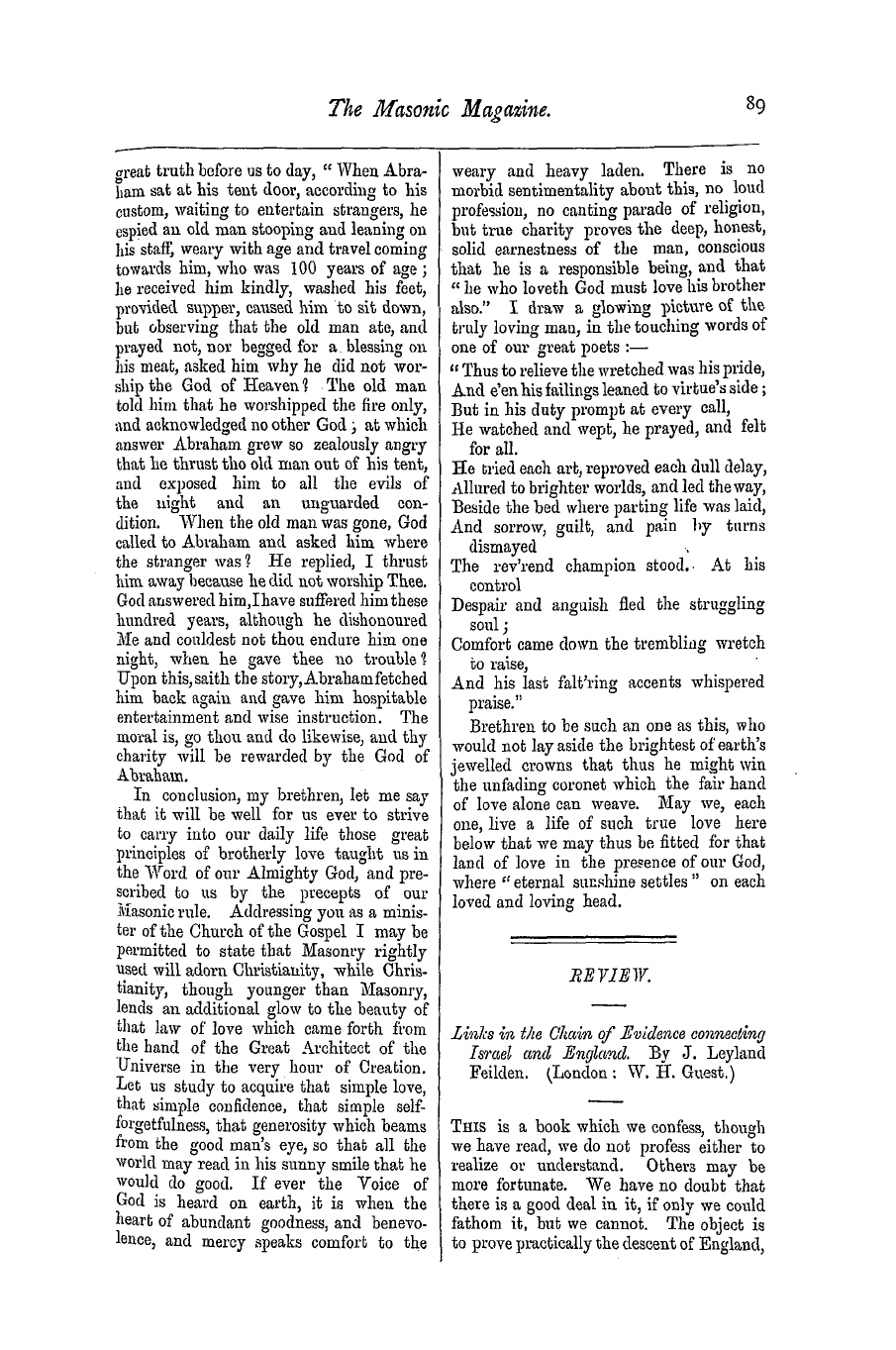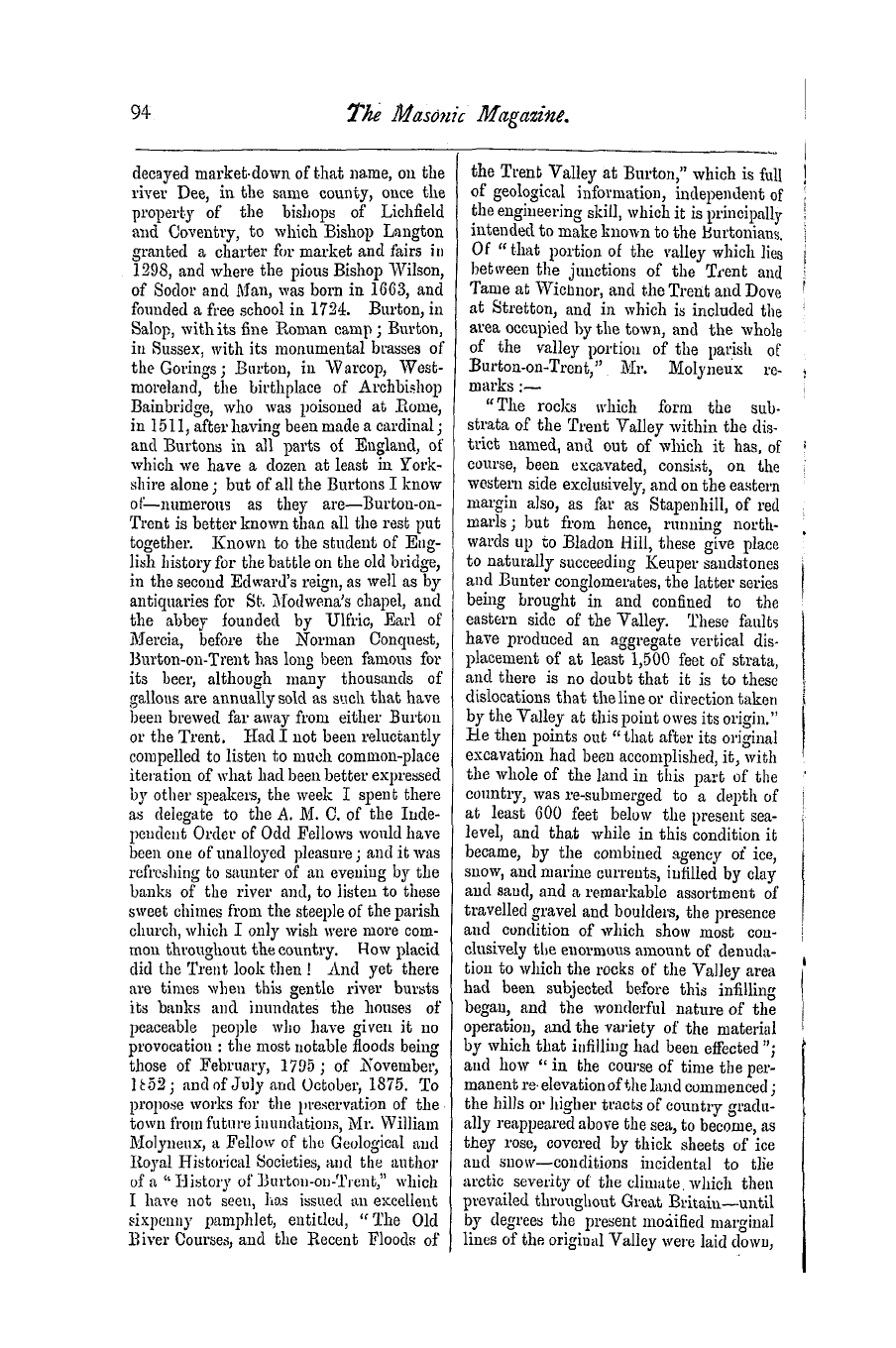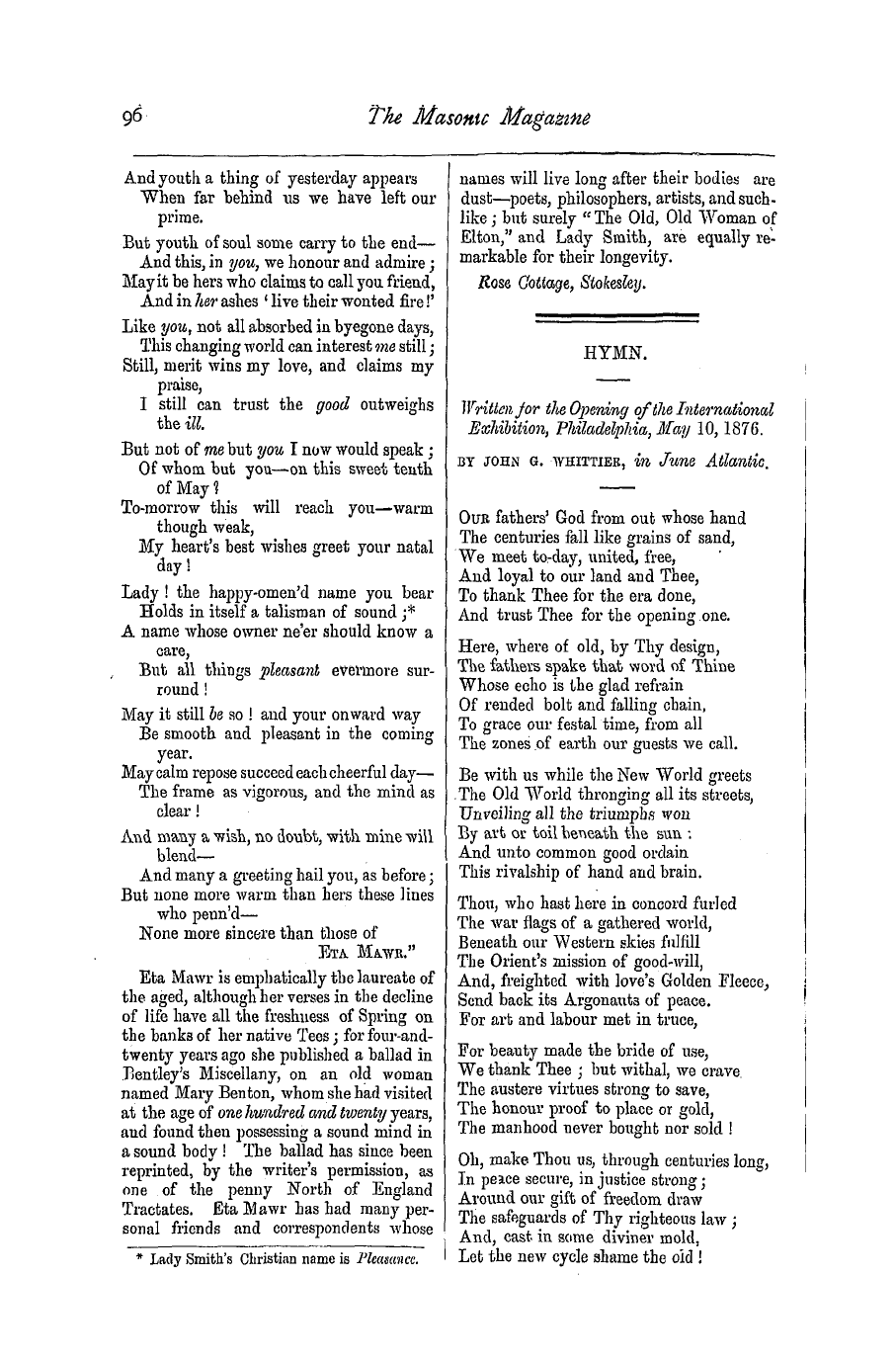-
Articles/Ads
Article NOTES ON LITERATURE, SCIENCE, AND ART. ← Page 4 of 6 →
Note: This text has been automatically extracted via Optical Character Recognition (OCR) software.
Notes On Literature, Science, And Art.
decayed market-down of that name , on the river Dee , in the same county , ouce the property of the bishops of Lichfield and Coventry , to which Bishop Langton granted a charter for market and fairs in 1298 , and where the pious Bishop Wilson , of Sodor and Man , was born in 1663 , and founded a free school in 1724 . Burton , in Salop , with its fine Roman camp ; Burton , in Sussex , with its monumental brasses of
the Gorings ; Burton , in Warcop , Westmoreland , the birthplace of Archbishop Bainbridge , who was jjoisoned at Rome , in 1511 , after having been made a cardinal ; and Burtons in all jiarts of England , ot which we have a dozen at least in
Yorkshire alone ; but of all the Burtons I know of—numerous as they are—Burton-on-Trent is better known than all the rest put together . Known to the student of English history for the battle on the old bridge , in the second Edward ' s reign , as well as by antiquaries for St . Modwena ' s chapel , and the abbey founded by Ulfric , Earl of Mercia , before the Norman Conquest , Burton-on-Trent has lone been famous for
its beer , although many thousands of gallons are annually sold as such that have been brewed far away from either Burton or the Trent . Had 1 uot been reluctantly compelled to listen to much common-place iteration of what had been better expressed by other speakersthe week I spent there
, as delegate to the A . M . C . of the Independent Order of Odd Fellows would have been one of unalloyed pleasure ; and it was refreshing to saunter of an evening by the banks of the river and , to listen to these sweet chimes from the steeple of the parish
church , which I only wish were more common throughout the country . How jilacid did the Trent look then ! And yet there are times when this gentle river bursts its banks and inundates the houses of peaceable people who have given it no
provocation : the most notable floods being those of February , 1705 ; of November , lc 52 ; and of July and October , 1875 . To projiose works for the ju-eservation of the town from future inundations , Mr . William Molyneuxa Fellow of the Geological aud
, Royal Historical Societies , and the author of a "History of Burton-on-Trent , " which I have not seen , lias issued an excellent sixpenny pamphlet , entitled , "The Old River Courses , and the Recent Floods of
the Trent Valley at Burton , " which is full of geological information , independent of the engineering skill , which it is p rincipally intended to make known to the burtonians . Of "that portion of the valley which lies between the junctions of the Trent and
Tame at Wictmor , and the Trent and Dove at Stretton , and in which is included the area occupied by the town , and the whole of the valley portion of the parish of Burton-on-Trent , " Mr . Molyneux remarks : —
"The rocks which form the substrata of the Trent Valley within the district named , and out of which it has , of course , been excavated , consist , on the western side exclusively , and on the eastern margin also , as far as Stapenhill , of red marls ; but from hencerunning
north-, wards up to Bladon Hill , these give place to naturally succeeding Keuper sandstones and Bunter conglomerates , the latter series being brought in and confined to the eastern side of the Valley . These faults have produced an aggregate vertical
disjnacenient of at least 1 , 500 feet of strata , and there is no doubt that it is to these dislocations that the line or direction taken by the Valley at this point owes its origin . " He then points out " that after its ori ginal excavation had been accomplished , it , with the whole of the land in this part of the
country , was re-submerged to a depth of at least 600 feet below the present sealevel , and that while in this condition it became , by the combined agency of ice , snow , and marine currents , infilled by clay and sand , and a remarkable assortment of travelled gravel and bouldersthe presence
, and condition of which show most conclusively the enormous amount of denudation to which the rocks of the Valley area had been subjected before this infilling began , and the wonderful nature of the operation , and the variety of the material
by which that infilling had been effected "; and how " in the course of time the permanent re- elevation of the land commenced ; the hills or higher tracts of country gradually reappeared above the sea , to become , as they rose , covered by thick sheets of ice and snow—conditions incidental to tlie
arctic seventy of the climate . which then prevailed throughout Great Britain—until by degrees the present modified marginal lines of the original Valley were laid down ,
Note: This text has been automatically extracted via Optical Character Recognition (OCR) software.
Notes On Literature, Science, And Art.
decayed market-down of that name , on the river Dee , in the same county , ouce the property of the bishops of Lichfield and Coventry , to which Bishop Langton granted a charter for market and fairs in 1298 , and where the pious Bishop Wilson , of Sodor and Man , was born in 1663 , and founded a free school in 1724 . Burton , in Salop , with its fine Roman camp ; Burton , in Sussex , with its monumental brasses of
the Gorings ; Burton , in Warcop , Westmoreland , the birthplace of Archbishop Bainbridge , who was jjoisoned at Rome , in 1511 , after having been made a cardinal ; and Burtons in all jiarts of England , ot which we have a dozen at least in
Yorkshire alone ; but of all the Burtons I know of—numerous as they are—Burton-on-Trent is better known than all the rest put together . Known to the student of English history for the battle on the old bridge , in the second Edward ' s reign , as well as by antiquaries for St . Modwena ' s chapel , and the abbey founded by Ulfric , Earl of Mercia , before the Norman Conquest , Burton-on-Trent has lone been famous for
its beer , although many thousands of gallons are annually sold as such that have been brewed far away from either Burton or the Trent . Had 1 uot been reluctantly compelled to listen to much common-place iteration of what had been better expressed by other speakersthe week I spent there
, as delegate to the A . M . C . of the Independent Order of Odd Fellows would have been one of unalloyed pleasure ; and it was refreshing to saunter of an evening by the banks of the river and , to listen to these sweet chimes from the steeple of the parish
church , which I only wish were more common throughout the country . How jilacid did the Trent look then ! And yet there are times when this gentle river bursts its banks and inundates the houses of peaceable people who have given it no
provocation : the most notable floods being those of February , 1705 ; of November , lc 52 ; and of July and October , 1875 . To projiose works for the ju-eservation of the town from future inundations , Mr . William Molyneuxa Fellow of the Geological aud
, Royal Historical Societies , and the author of a "History of Burton-on-Trent , " which I have not seen , lias issued an excellent sixpenny pamphlet , entitled , "The Old River Courses , and the Recent Floods of
the Trent Valley at Burton , " which is full of geological information , independent of the engineering skill , which it is p rincipally intended to make known to the burtonians . Of "that portion of the valley which lies between the junctions of the Trent and
Tame at Wictmor , and the Trent and Dove at Stretton , and in which is included the area occupied by the town , and the whole of the valley portion of the parish of Burton-on-Trent , " Mr . Molyneux remarks : —
"The rocks which form the substrata of the Trent Valley within the district named , and out of which it has , of course , been excavated , consist , on the western side exclusively , and on the eastern margin also , as far as Stapenhill , of red marls ; but from hencerunning
north-, wards up to Bladon Hill , these give place to naturally succeeding Keuper sandstones and Bunter conglomerates , the latter series being brought in and confined to the eastern side of the Valley . These faults have produced an aggregate vertical
disjnacenient of at least 1 , 500 feet of strata , and there is no doubt that it is to these dislocations that the line or direction taken by the Valley at this point owes its origin . " He then points out " that after its ori ginal excavation had been accomplished , it , with the whole of the land in this part of the
country , was re-submerged to a depth of at least 600 feet below the present sealevel , and that while in this condition it became , by the combined agency of ice , snow , and marine currents , infilled by clay and sand , and a remarkable assortment of travelled gravel and bouldersthe presence
, and condition of which show most conclusively the enormous amount of denudation to which the rocks of the Valley area had been subjected before this infilling began , and the wonderful nature of the operation , and the variety of the material
by which that infilling had been effected "; and how " in the course of time the permanent re- elevation of the land commenced ; the hills or higher tracts of country gradually reappeared above the sea , to become , as they rose , covered by thick sheets of ice and snow—conditions incidental to tlie
arctic seventy of the climate . which then prevailed throughout Great Britain—until by degrees the present modified marginal lines of the original Valley were laid down ,



















































